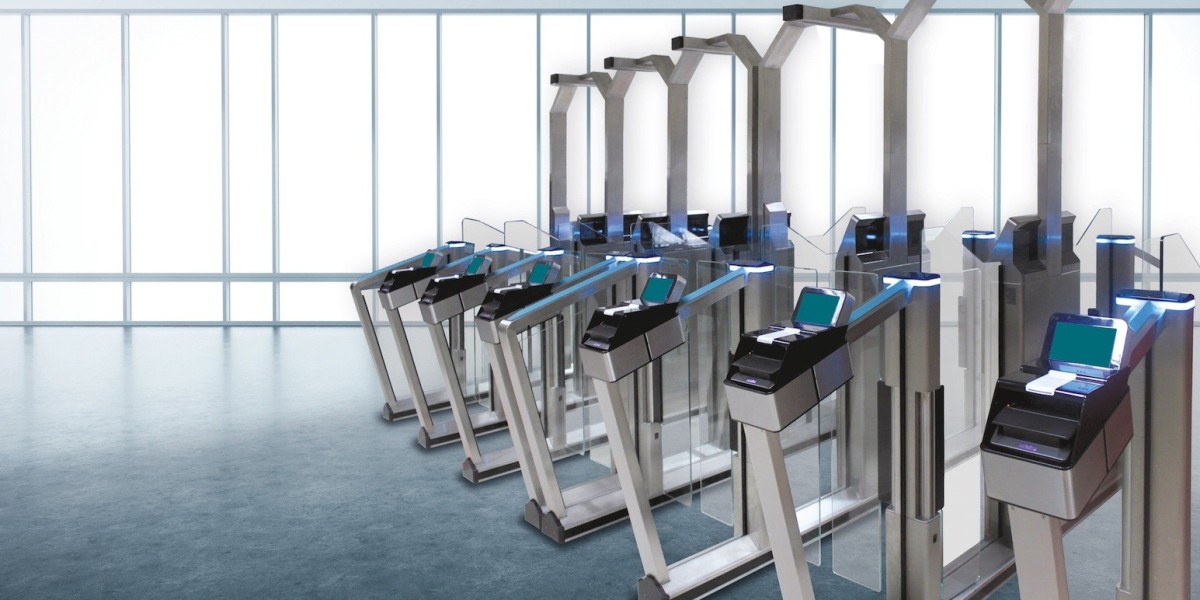The automated border control market is playing a pivotal role in reshaping the future of global travel. As international travel continues to grow and security challenges become more complex, the demand for more efficient and secure border management solutions has reached unprecedented heights. Automated border control technologies, which rely heavily on biometric systems, artificial intelligence, and self-service kiosks, are increasingly becoming the cornerstone of modern travel infrastructure.
The Shift Toward Automation in Border Management
Traditional border control processes often rely on manual inspections and human intervention. Travelers typically wait in long lines for passport checks, where border agents physically inspect travel documents and verify identities. These processes, while essential, can lead to congestion, delays, and human error, especially during peak travel seasons. As a result, the need for automation in border management has grown, driven by the need to balance security with efficiency.
Automated border control systems use a range of technologies, including biometric identification, facial recognition, fingerprint scanning, and iris recognition, to verify travelers’ identities quickly and accurately. These systems can process large volumes of passengers with minimal intervention, significantly reducing wait times and increasing throughput at checkpoints. With the ability to scan and compare biometrics against stored data in real time, automated systems also offer greater accuracy in identifying and preventing fraud, such as identity theft or document falsification.
Market Positioning: Key Players and Competitive Dynamics
The Automated Border Control market is evolving rapidly, with several key players competing to provide cutting-edge solutions to meet growing demand. The market is characterized by a mix of technology providers, government agencies, and airport operators, all working together to create a seamless and secure travel experience.
At the forefront of this transformation are leading companies such as IDEMIA, SITA, and Thales, which specialize in biometric identification and border security technologies. These firms have established strong market positions by providing integrated automated solutions that combine biometric verification, e-gates, and self-service kiosks. Their ability to deliver robust, scalable, and secure solutions has made them trusted partners for airports and government agencies around the world.
The competitive landscape is further influenced by a shift toward collaboration rather than competition. Technology providers, government authorities, and airport operators are increasingly working together to standardize solutions and ensure interoperability across regions. This collaboration is crucial for creating a seamless travel experience where passengers can use the same biometric data for entry at multiple borders, making cross border travel smoother and more efficient.
Key Trends Driving the Growth of Automated Border Control
Several key trends are driving the growth and development of the automated border control market, with significant implications for global travel.
Focus on Security and Efficiency
As global security concerns intensify, governments are prioritizing technologies that can enhance border security without slowing down the movement of people. Automated systems that rely on biometrics offer a more secure and efficient way of verifying identities, reducing the risk of identity fraud and minimizing the need for human intervention. This makes them an ideal solution for high-traffic international borders, where ensuring security while minimizing delays is critical.Post-Pandemic Demand for Contactless Solutions
The COVID-19 pandemic accelerated the demand for contactless and touchless solutions, with travelers increasingly looking for ways to minimize physical interaction with border agents and avoid long queues. Automated border control systems, which rely on facial recognition and other biometric technologies, fulfill this need for a safer, more hygienic travel experience. Even as the world recovers from the pandemic, the preference for contactless solutions remains strong, positioning automated systems as a permanent fixture in border management.Technological Advancements in Biometrics and AI
The ongoing advancements in biometric technology and artificial intelligence are propelling the evolution of automated border control systems. AI-powered algorithms enable more accurate biometric identification and fraud detection, while machine learning helps systems continually improve their performance. These technologies allow border control systems to handle more complex scenarios and adapt to new challenges, making them increasingly reliable for securing international borders.Standardization and Interoperability
One of the significant hurdles for widespread adoption of automated border control systems has been the lack of global standardization. However, efforts to create standardized biometric protocols and interoperability between different countries' systems are underway. These efforts will facilitate seamless travel experiences, where travelers can use the same biometric data to move through borders efficiently, regardless of the country they are entering. Standardization will also reduce the cost of implementing these systems, further accelerating their adoption.
The Future of Automated Border Control
The future of the automated border control market looks promising, with increasing adoption expected across both developed and emerging economies. Airports and governments are investing heavily in upgrading infrastructure to accommodate these advanced systems, recognizing the long term benefits they offer in terms of enhanced security, operational efficiency, and passenger satisfaction.
As the market matures, the demand for seamless travel experiences will continue to drive innovation. Border agencies will increasingly integrate automated systems with other aspects of travel, such as baggage handling, customs checks, and flight information systems, creating a more integrated and efficient travel ecosystem.



